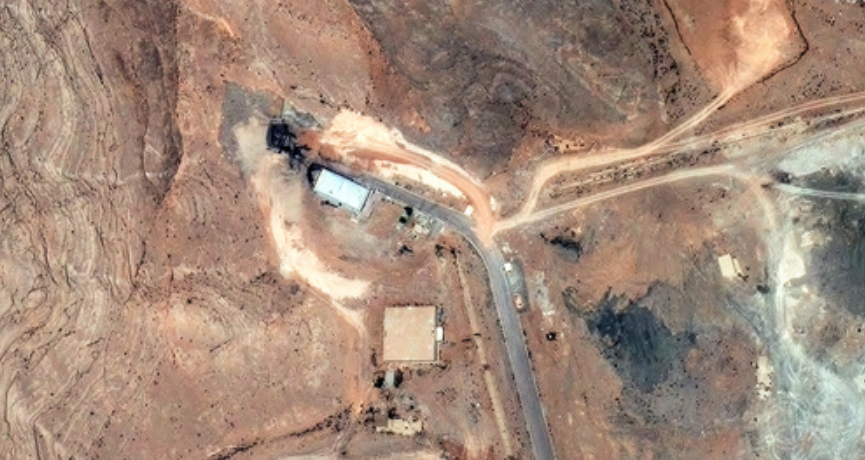
Missing 400kg of Iranian Uranium Sparks U.S. Concerns Over Potential for 10 Nuclear Weapons
Israeli authorities told The New York Times that Iran may have relocated the stockpile to a covert site in the days prior to the assault.
U.S. Vice President JD Vance informed American channel ABC News that a 400 kg uranium stockpile, which could be used to produce up to 10 nuclear bombs, is missing after Washington landed six “bunker busters” on three Iranian nuclear facilities last week. Richened to 60%, the missing uranium is viewed as a potent negotiating advantage for Iran should it decide to reopen negotiations with the US on a new nuclear agreement. To be utilised as a nuclear bomb, it must be enriched to roughly 90%.
Israeli authorities told The New York Times that Iran may have transferred the stockpile and some of the equipment to a hidden location days prior to the assault.
Israel requested that the US use its B-2 ‘Spirit’ bombers and the GBU-37 ‘bunker busters’ bombs early on Sunday after satellite images taken prior to the US strike showed a queue of 16 trucks outside the Fordow nuclear plant, which is situated inside a mountain and is thought to be immune to most missile attacks.
The nuclear plants in Fordow, Natanz, and Isfahan were struck by the bombs. Images taken after the incident revealed significant damage to all three, but the trucks were unable to be seen.
Although the US and Israel firmly think it was transported to another underground storage location, close to the historic capital of Isfahan, it remains unclear what was moved and where.
Rafael Grossi, the head of the International Atomic Energy Agency, a global nuclear watchdog, said that the last inspection was conducted a week prior to Israel’s initial strike on Iran. Grossi told the UN Security Council last week that it is “essential” that the IAEA start inspections again as soon as feasible.
Additionally, he cautioned the world that this “indispensable work” is delayed by ongoing military escalation, which significantly diminishes the likelihood of a diplomatic solution to prevent Iran from obtaining nuclear weapons.
Does Iran possess weapons-grade nuclear material or nuclear weapons?
Iran has long maintained that the goal of its nuclear program is peaceful. However, Israel’s red signal prior to its strike was its assertions that it was developing nuclear weapons. Tel Aviv even implied that Tehran’s nuclear weapons development was at a “point of no return.”
Iran threatened to leave the Non-Proliferation Treaty, which is part of the global framework to prevent the spread of nuclear weapons, in response to Israel’s attacks. Takht Ravanchi, Iran’s deputy foreign minister, denied rumours that the program would be discontinued. “No one can tell us what to do…”
In this sense, though, the American narrative has been a little unclear. After Israel launched its initial series of missile strikes, US intelligence said Iran was not pursuing nuclear weapons and would not be able to produce one for at least three years, according to a CNN story last week.
Because much of the research was hidden deep underground, at bases like Fordow that Israeli missiles could not reach, Intel also claimed that Israel’s strikes had only delayed Iran’s progress by a few months. However, a senior official told CNN that Tehran does possess all the required components.
After US Director of National Intelligence Tulsi Gabbard retracted her statement to Congress months ago that Iran is not producing nuclear weapons, there was even more misunderstanding.
She said, however, that Iran could create them “within weeks” on Saturday. Her prior information was deemed “wrong” by President Donald Trump, which prompted the change.
Trump had previously given Iran two weeks to come to a new nuclear safety agreement, but he took action after intelligence revealed that Israel could not successfully destroy Iranian sites without US support.
“We’re not involved in it (but) it’s possible we could…” Hours before the US strike, Trump told ABC Sunday morning that Iran and Israel should come to an agreement “before it is too late” on their own.
Following the strikes, Trump said that the ‘bunker busters’ and a volley of Tomahawk missiles fired as decoys had “completely and totally obliterated” Iran’s nuclear program. He praised the 37-hour military operation, which was piloted by seven B-2 bombers operating nonstop and radio silently from a Missouri air base.



